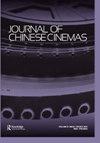The personal, the political and the popular: Sino-Japanese film collaboration in the early reform era
IF 0.4
3区 艺术学
0 FILM, RADIO, TELEVISION
引用次数: 4
Abstract
Abstract Following the severe restrictions of the Cultural Revolution, China restarted widespread imported film distribution in 1978. Between 1978 and the start of the revenue-sharing quota in 1994, more than 600 imported films from over 50 nations screened across China. For much of this era, Japan was the most favored importer—exciting industry personnel and audiences alike. The Sino-Japanese connection, which combined political-cultural reciprocity with popular film content, was an ideal match for an industry in the midst of a transition between a Planned Economy past to a market-based future. Since moviegoing in China reached all-time heights during this period, the legacy of several of the most popular Japanese imports has endured for decades.个人、政治与大众:改革初期的中日电影合作
摘要在文化大革命的严格限制下,中国于1978年重启了广泛的进口电影发行。从1978年到1994年开始实行收入分成制,来自50多个国家的600多部进口电影在中国上映。在这个时代的大部分时间里,日本是最受欢迎的进口国,这让行业人员和观众都很兴奋。中日关系将政治文化互惠与流行电影内容结合在一起,对于一个正处于计划经济时代向市场经济时代过渡的行业来说,这是一个理想的匹配。自从这一时期中国的观影人数达到历史最高水平以来,一些最受欢迎的日本进口电影的遗产已经延续了几十年。
本文章由计算机程序翻译,如有差异,请以英文原文为准。
求助全文
约1分钟内获得全文
求助全文

 求助内容:
求助内容: 应助结果提醒方式:
应助结果提醒方式:


